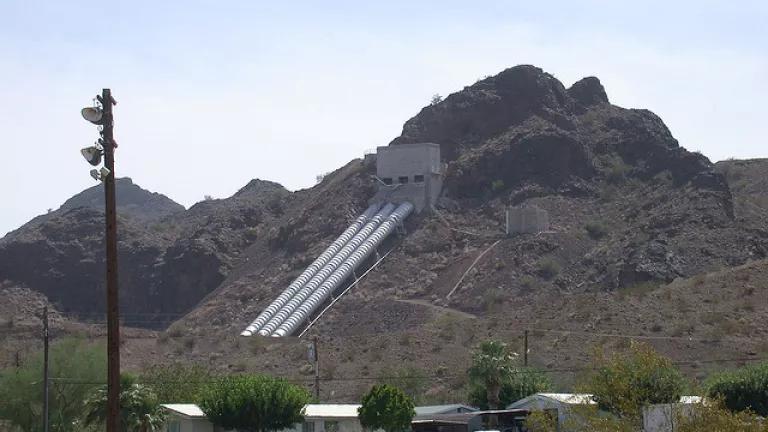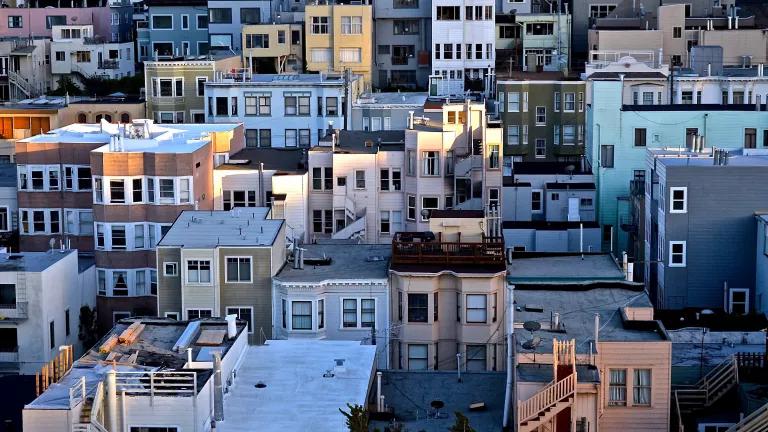
At long last, a somewhat plausible method for calculating the amount of energy that it takes to provide water and wastewater service in California has been approved by state regulators. In the ten years since the "water-energy nexus" was first ballyhooed as offering a whole new strategy for curtailing greenhouse gas emissions, the enthusiasm for action to "save energy by saving water" has run far ahead of our knowledge of how and where to proceed to produce real results. That paralysis will soon abate thanks to a decision this week by the California Public Utilities Commission approving two new software tools for use in calculating the amount of energy involved in delivering water to consumers and collecting and treating the resulting wastewater. This landmark decision approves these tools with specific guidance for their use by California's energy utilities, allowing them to evaluate water efficiency projects for inclusion in the utilities' energy efficiency programs for 2016 and beyond.
This decision is a big deal because roughly a billion dollars of energy revenues are invested in energy efficiency each year. In light of the state's unprecedented drought, this decision allowing water efficiency projects to qualify for even a small portion of the energy efficiency investment pool comes not a day too soon.
But how much energy can water efficiency projects really save? That's been the hang-up for years, because actually calculating the amount of energy "embedded" in the cold water piped to consumers is a daunting task. There are literally thousands of water suppliers just in California, with many different sources of water, and very different terrain over which water is distributed. Pumps and treatment plants may be new or old, oversized or underutilized, energy-efficient or inefficient. What's more, there is no standardized reporting of energy consumption by water and wastewater service providers.
In light of this inherent complexity and the lack of current data, some generalizations had to be made and some "default" values substituted for real (but currently unavailable) data. Thus, version 1.0 of these calculators will necessarily produce a less-than-precise picture of the amount of energy that might be saved by a water conservation project in a particular location.
I say might be saved because not all of the energy embedded in water can predictably be saved by conserving water at the point of use. This is due to the role of carry-over storage in the state's water supply systems. Roughly half of the energy embedded in water is attributable to the state's major long-distance conveyance systems (e.g., State Water Project and Colorado River Aqueduct) to transport water uphill. While the movement of water to and from treated (or "finished") water storage is usually in sync with the demands of water users (i.e., "load-following"), the conveyance of untreated water from its natural source to a carry-over storage facility is not load-following. Carry-over storage serves to dampen large fluctuations in supply and demand driven by the frequent variations in the hydrologic cycle from one year to the next. Accordingly, operation of these conveyances to carry-over storage is driven by source water availability, and changes in retail customer end-use of water may not influence such conveyance operations for many years or even decades. If the conveyance systems operations don't change, then energy savings will not be realized.
NRDC urged the Commission to exercise caution before allowing end-use water efficiency measures to claim energy savings from the embedded energy related to long-distance conveyance of water to carry-over storage. In response, the Commission agreed that this issue should be considered in future updates of the calculator tools. If left unresolved, this wrinkle in the calculators will likely lead to a significant overstatement of the energy savings attributed to end-use water efficiency. The problem would be compounded if other state agencies (e.g., the Department of Water Resources, the California Energy Commission) similarly follow suit and allow such embedded energy savings to be credited to various water savings programs
With this issue deferred for the time being, NRDC agrees that it's appropriate to get started crunching the numbers and putting together water-saving projects that will save predictable amounts of energy. Many of the remaining questions about the use of the calculator tools can only be resolved by the use of the tools. Facing the worst drought in the state's history, there's no better time to apply these methods to support new water-saving projects as early as next year.
Photo credit: Don Barrett/Flickr




